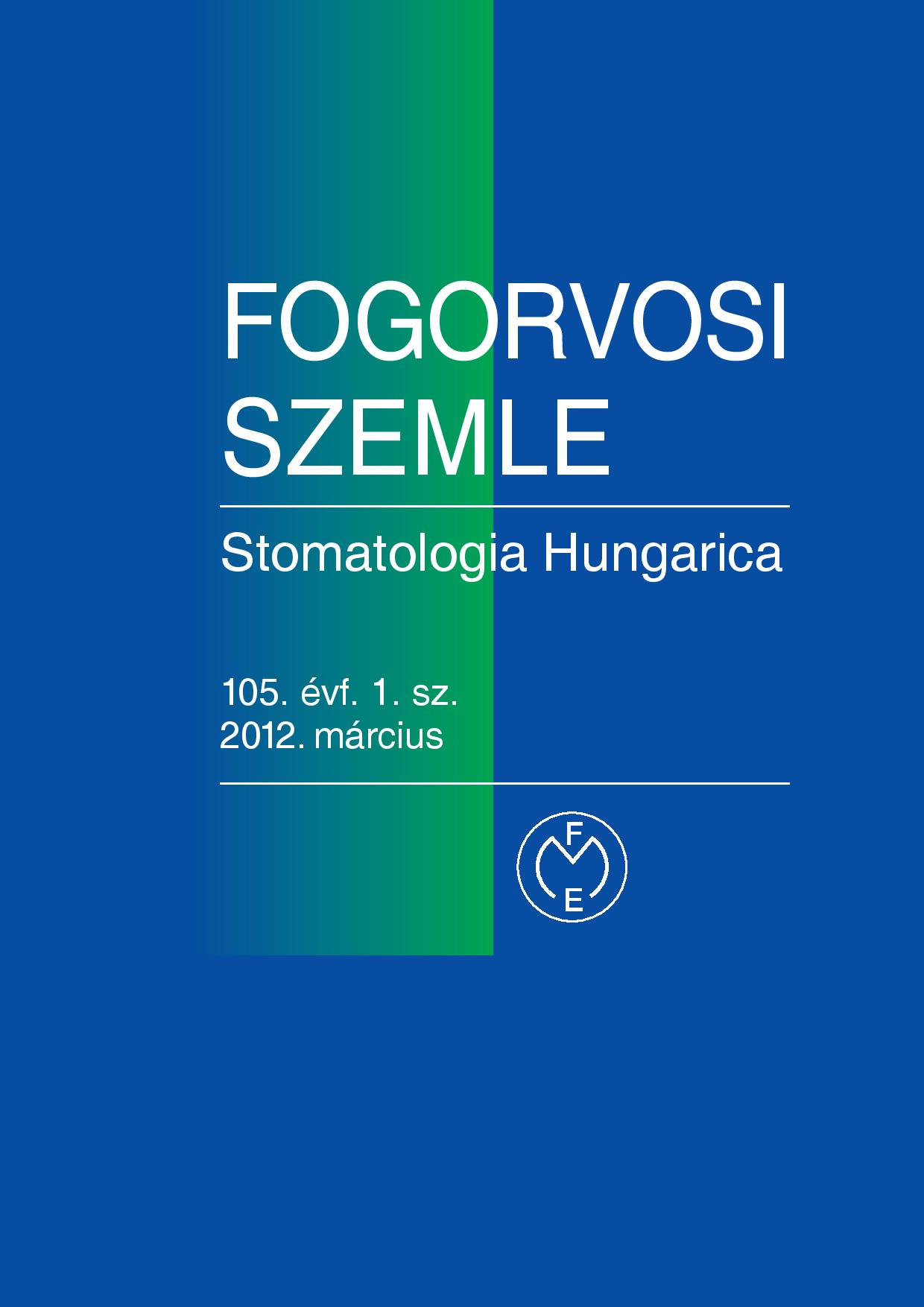Dental fear and anxiety scores of a Hungarian population living in the Hungarian-Slovakian border region
A pilot study
Abstract
The aim of the authors was to investigate whether living as a minority has an influence on the dental fear and anxiety values. In this study 201 volunteers (n = 201, inside border Hungarians 144, outside border Hungarians 57, male 90, female 111; age 8 to 83 years, mean 44 ± 16 yrs.) were investigated. Our methods included collection of demographic data (gender, age, marital status, profession), and administration of the Hungarian versions of dental fear and anxiety related scales namely: DAS, DAQ, DASQ, DFS, DBS, STAI-S, STAI-T and Expectation Scale. Mean values of the scales were: DAS: 10,34 ±3,54; DAQ: 2,3 ±1,15; DASQ: 12,58 ±4,55; DFS: 40,37 ±15,67; DBS: 32,89 ±12,94; Expectation Scale: 2,87 ±3,56, STAI-S: 39,51 ±10,68; STAI-T 41,65 ±9,08. The mean scores of all the scales were higher in the case of Hungarians living inside the borders of Hungary. The differences were significant in the case of DAS, DAQ, DASQ and DFS scales (p<0,05). Data of our study indicate that living as a minority not necessarily leads to the increase of dental fear and anxiety.
Copyright (c) 2021 Authors

This work is licensed under a Creative Commons Attribution 4.0 International License.


.png)




1.png)



